Classic Aston Martin V8's
Discussion
This thread was originally meant to be just about my 1972 Aston Martin V8 but I felt the need to set the scene and talk about my previous and first Aston Martin, a 1971 DBS V8, which may help to explain my addiction for throwing vast sums of money at ropey old motors…. Apologies for the length but hopefully it’s an enjoyable read.
February 2005, that was when I bought my first Aston, a 1971 DBS V8, from a Coys auction at a classic car show in Maastricht. I saw it on their website, booked a ticket on the Eurostar and headed over for the show. I got there an hour or two before the auction started, crawled over and under it enough to form an opinion that it was worth it if the price was right.
The bidding started and the price went up quite quickly to near my limit but then thankfully slowed. I put my bid in but was outbid, so I bid again to what was my max (having carefully calculated buyers premium, VAT etc) and won!
A DBS V8 for £11k, I couldn’t think of a better car for the money. The next day, still somewhat in a state of shock, I drove it back to England.
As I crossed Northern Europe, I soon got used to the people leaning out there cars with phones taking pictures. When I stopped for petrol, the car would be surrounded. It was surreal and something I had never experienced before. The journey home passed without incident, although I was convinced I wasn’t going to make it and that some terminal problem would end the adventure. But nothing happened, the Aston just rolled along the Autoroute without a single issue. At the Eurotunnel, I was waved straight through and soon I was back home in London with my Aston Martin.
The eight years that followed were a rollercoaster! That car sucked up every spare penny I had. But I tried to use it as much as I could.
Here are some photos from an AMOC instruction day at Curborough, which show the car as bought.
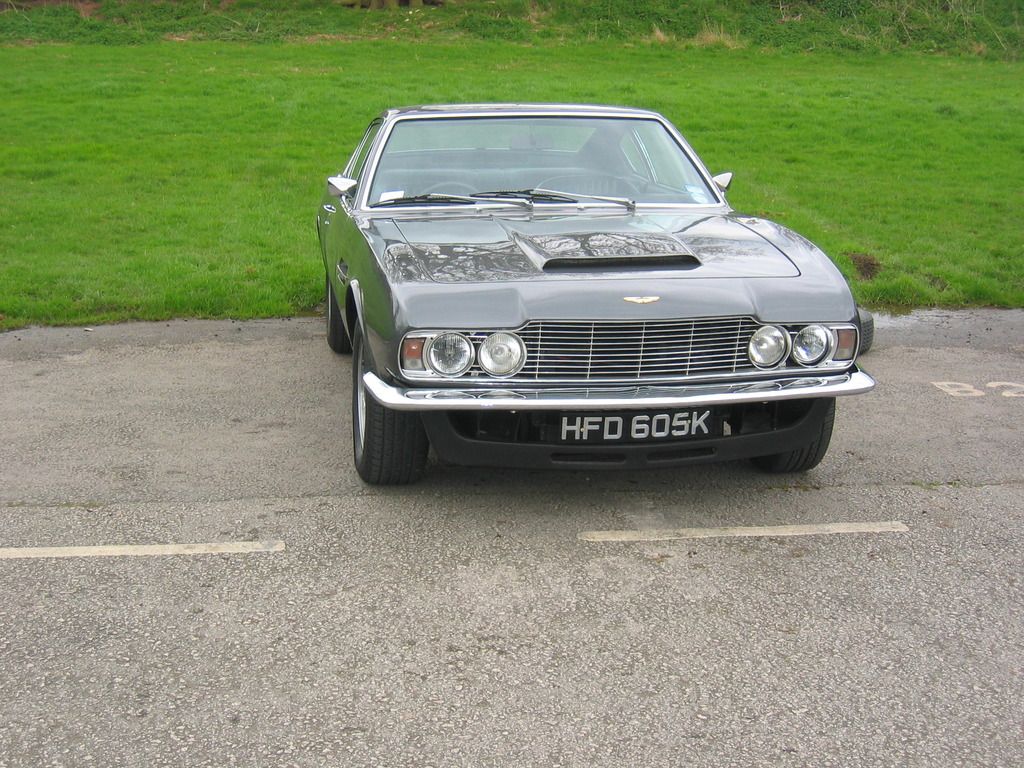
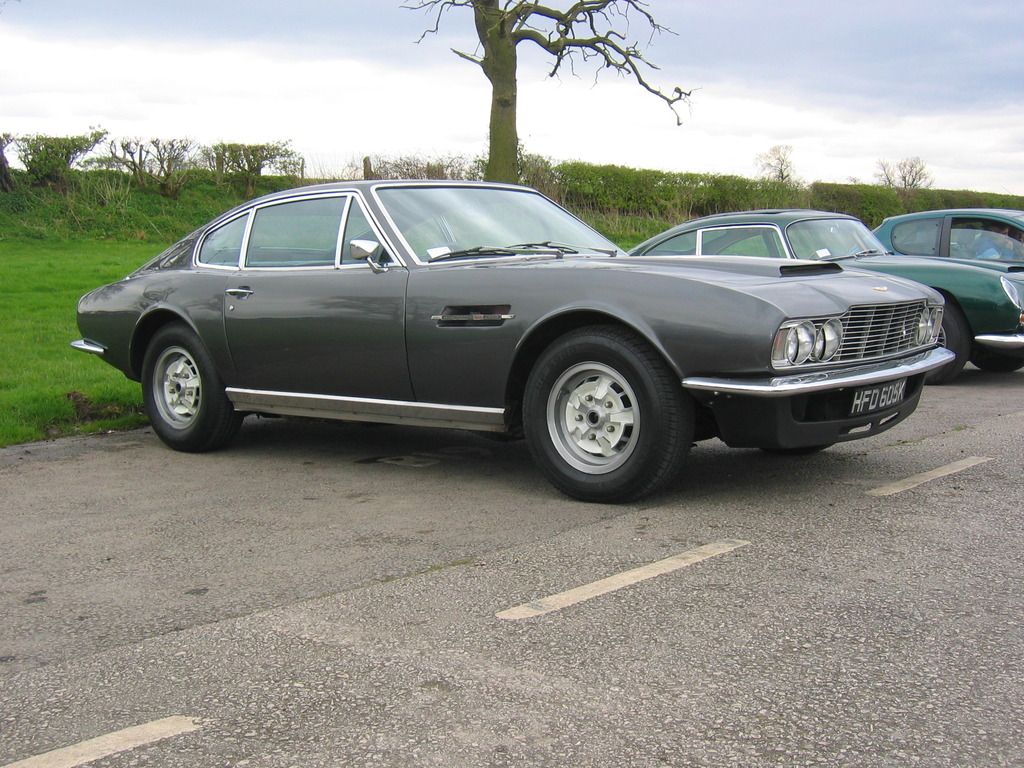

It took me and the Mrs on weekends away and trips abroad.
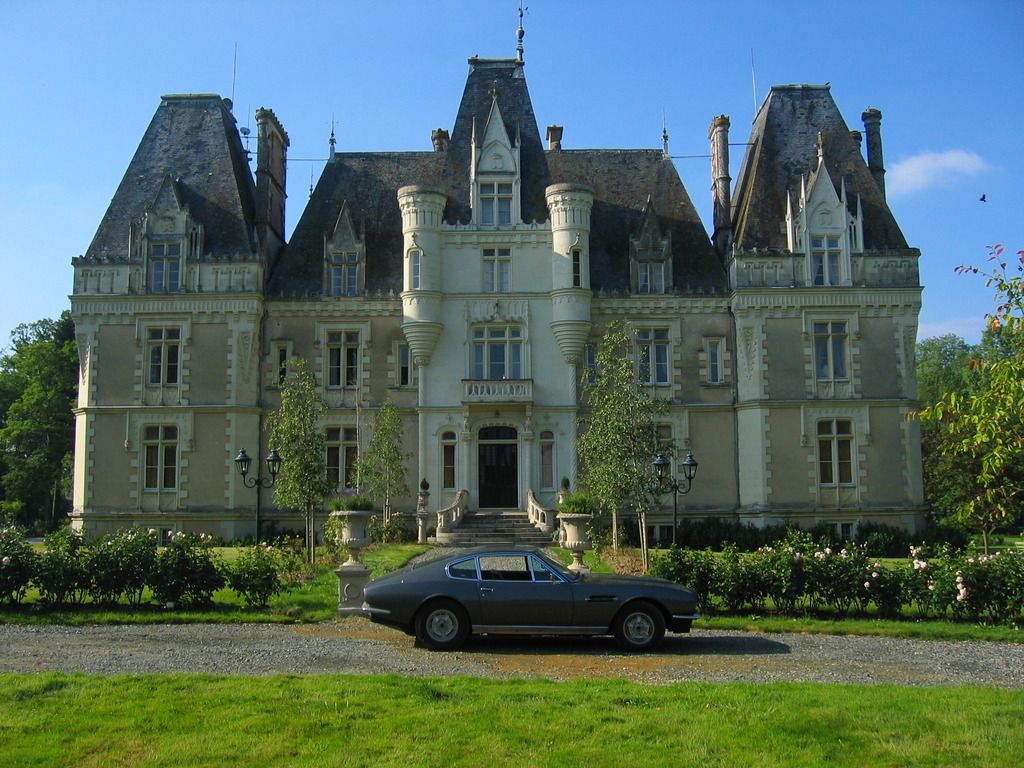
I went through the running gear, upgrading and replacing bits as necessary. I lowered the suspension, fitted some later wheels with better tyres, and continued to drive it as much as possible.
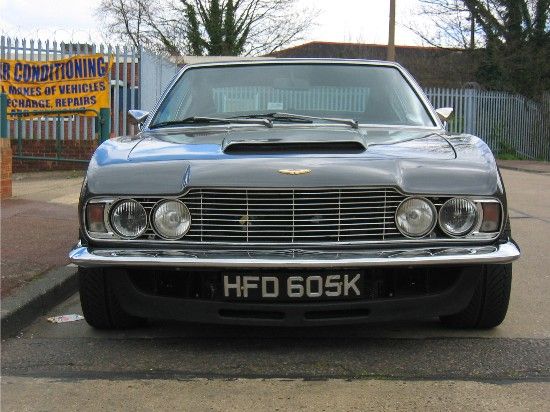
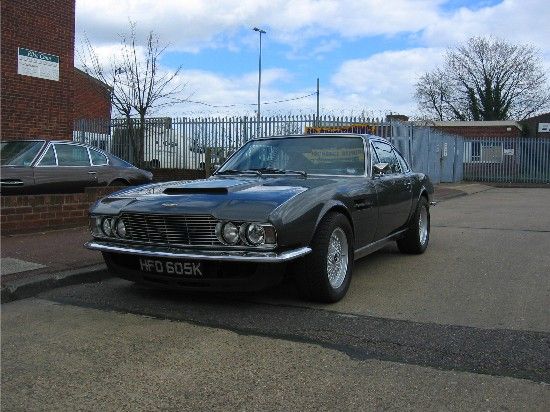
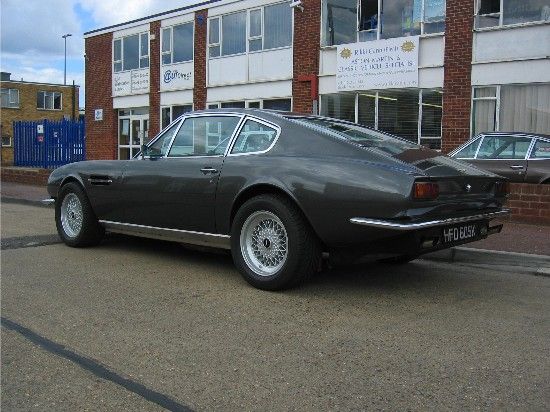
More trips abroad, here in rural France on the way to a friends wedding.
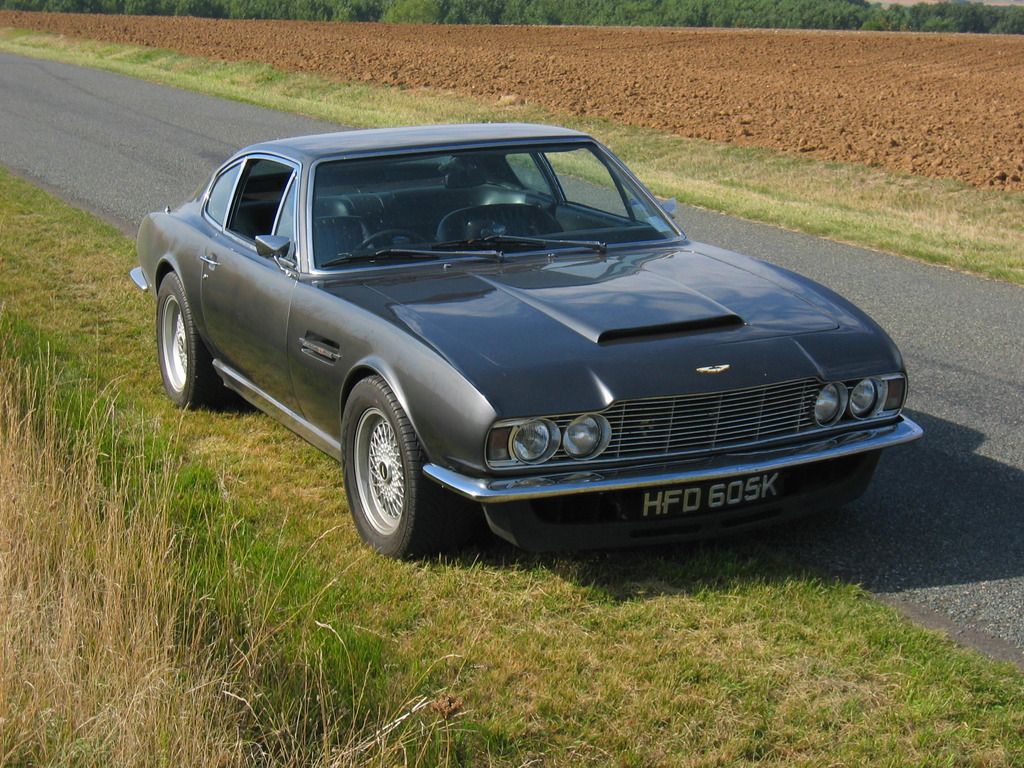
Rolling road day

I even did a RWYB day in it at Santa Pod!
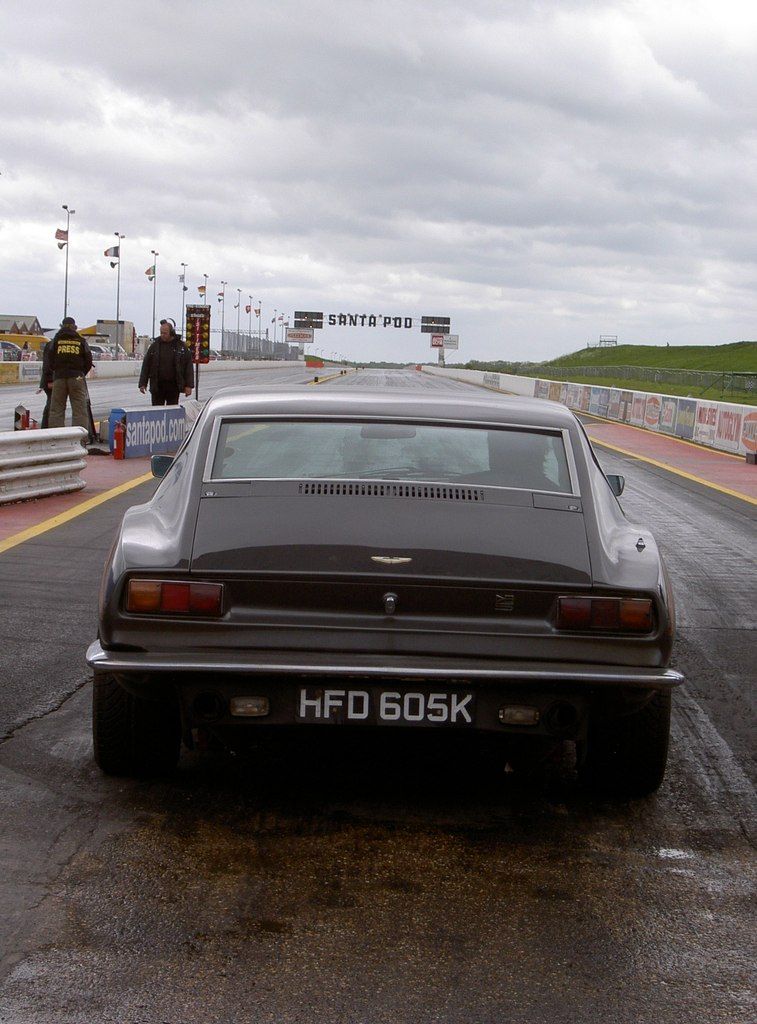
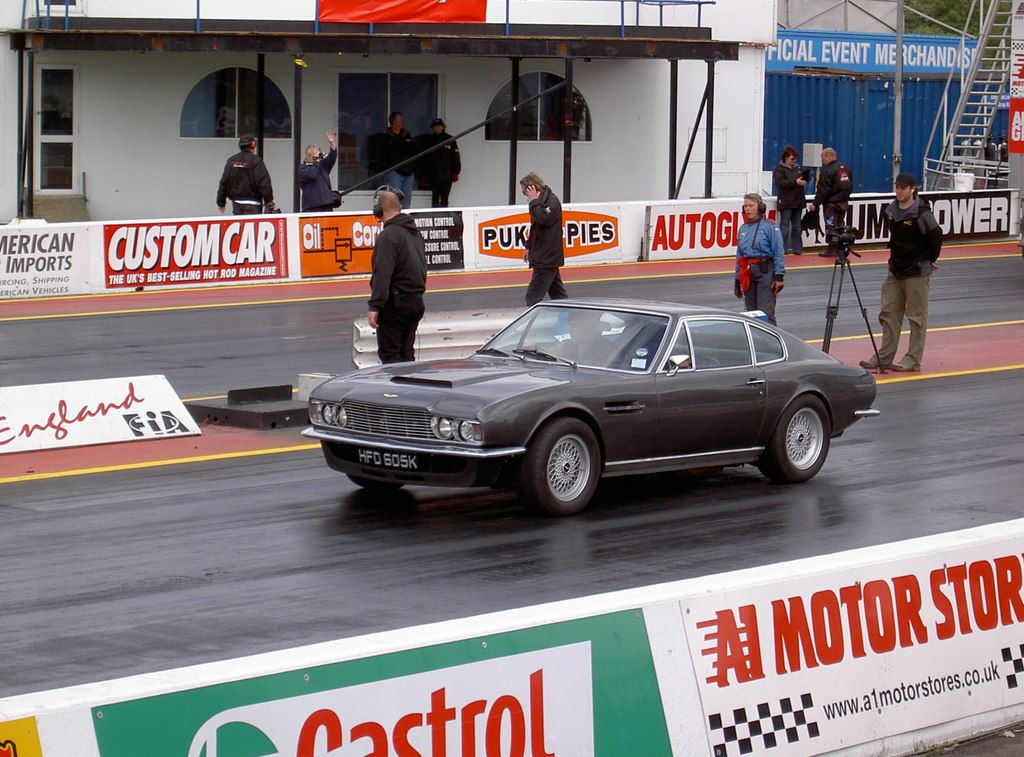
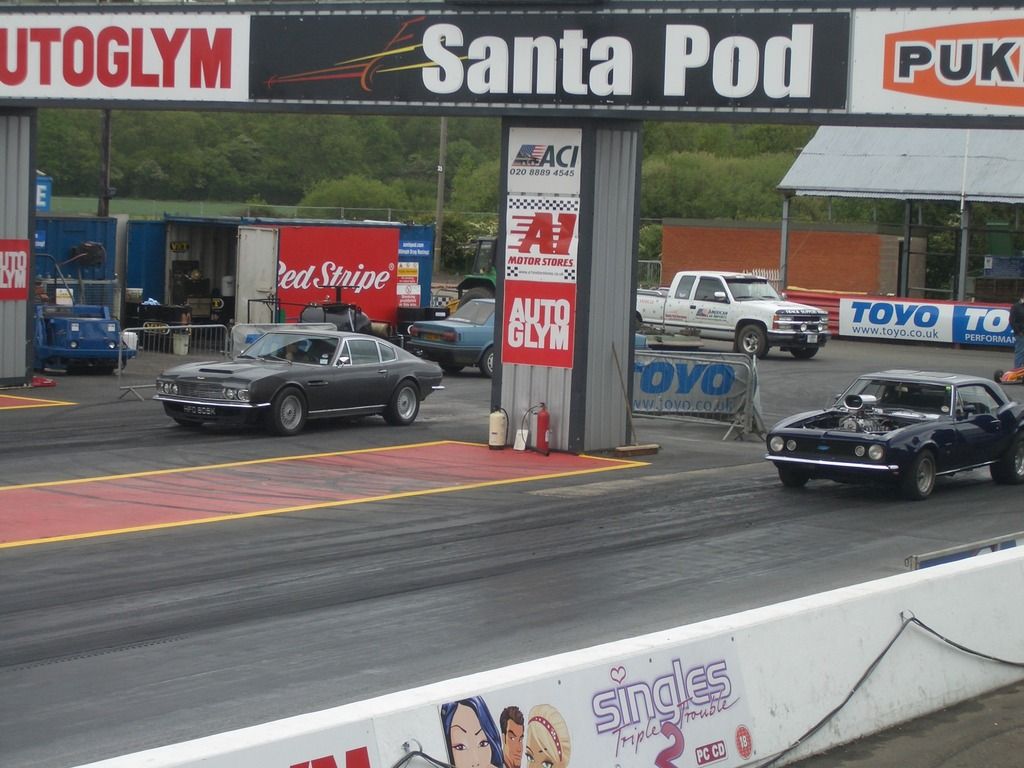
(I smoked the Camaro...)
After a few years, one improvement I did want to make was to convert it from the 3 speed Torqueflite automatic gearbox to a manual. The mechanical fuel injected engines did not have an abundance of torque low down and needed to be revved so a manual suited the engine much better. I test drove two manual cars belonging to other AMOC members which underlined how much better the manual was.
I found the correct dog leg ZF manual box for £5k and was all set to get it installed when it became apparent that the car needed a full engine rebuild. So the gearbox was sold and the engine was rebuilt, which stopped the oil pressure gauge flicking all over the place!
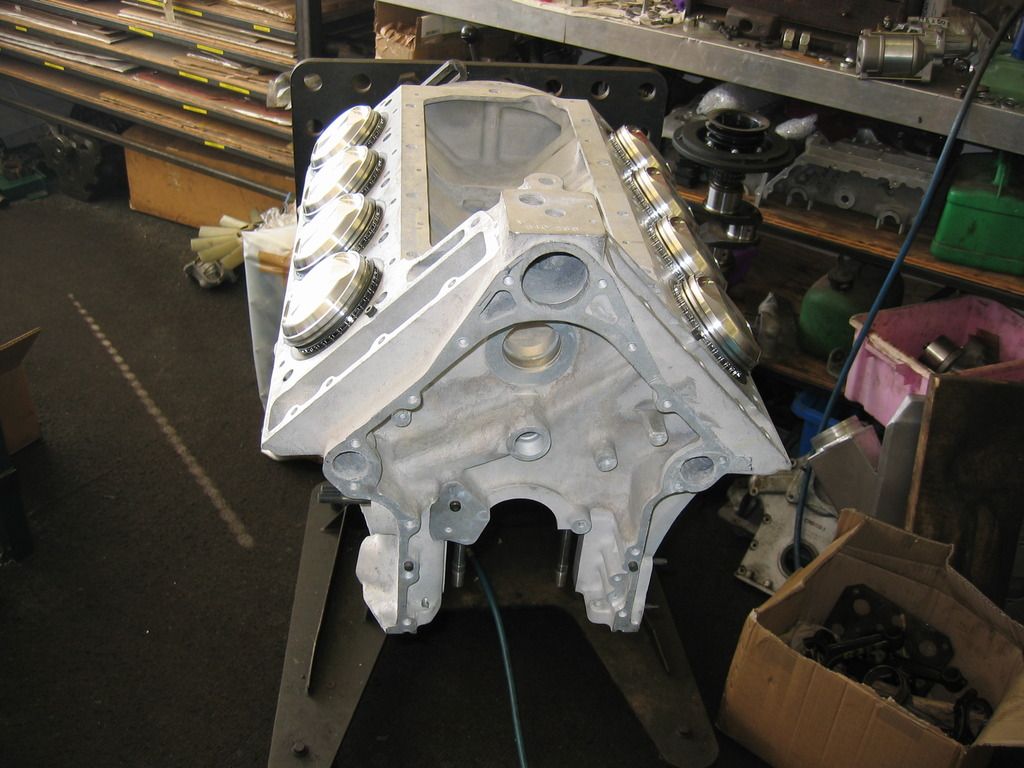

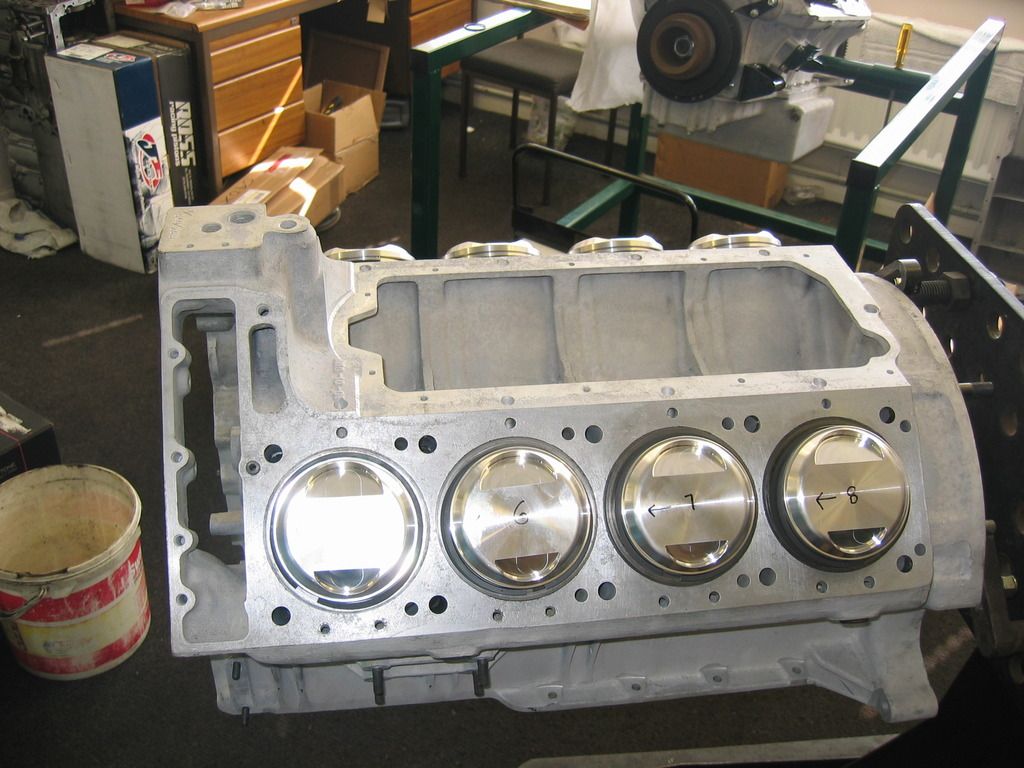
It sounds so simple when you type it like that, but I had never spent such a significant sum on a car before. The rebuild cost of the engine was far in excess of the purchase price..
But even after the newly rebuilt engine was back in the car, I was always chasing problems. I just didn’t have the cash to really sort the car out, all the money I spent was just keeping it on the road rather than improving it. Despite the thousands I spent every year, it was still a condition 2/3 car. Everything went wrong with it: brakes, suspension, steering. I always thought that once something was repaired you could forget about it but not with this car. We replaced a number of components two or three times. The Mechanical Fuel Injection pump kept leaking, despite being rebuilt, so that had to come off and be sent back to the company that reconditioned it the first time. The problems just went on and on...
Then it failed the MOT due to corrosion….
Despite all of the above, I never thought of selling it (okay I did but only briefly!). What else would give me so much pleasure (and pain!) for the same price? This was before prices had got silly. So I found a chap who knew Astons (a fellow DBS V8 owner) but who worked on his own in a single unit to do the work, thus avoiding the eye watering prices some Aston specialists were quoting.
He stripped it all back and uncovered all manner of horrors. Accident damage that had been badly repaired and corrosion everywhere. Boot floor, inner wings, sills, A post, B post, floor plans, door frames etc. The corrosion was the worst he’d ever seen and this was not helped by the fact that my Aston had been very badly restored at some point in the past for a previous owner in Holland with all manner of bodges by someone who clearly knew nothing about Astons. I have hundreds of pictures of the restoration but these should give you an idea of the extent of the rot.
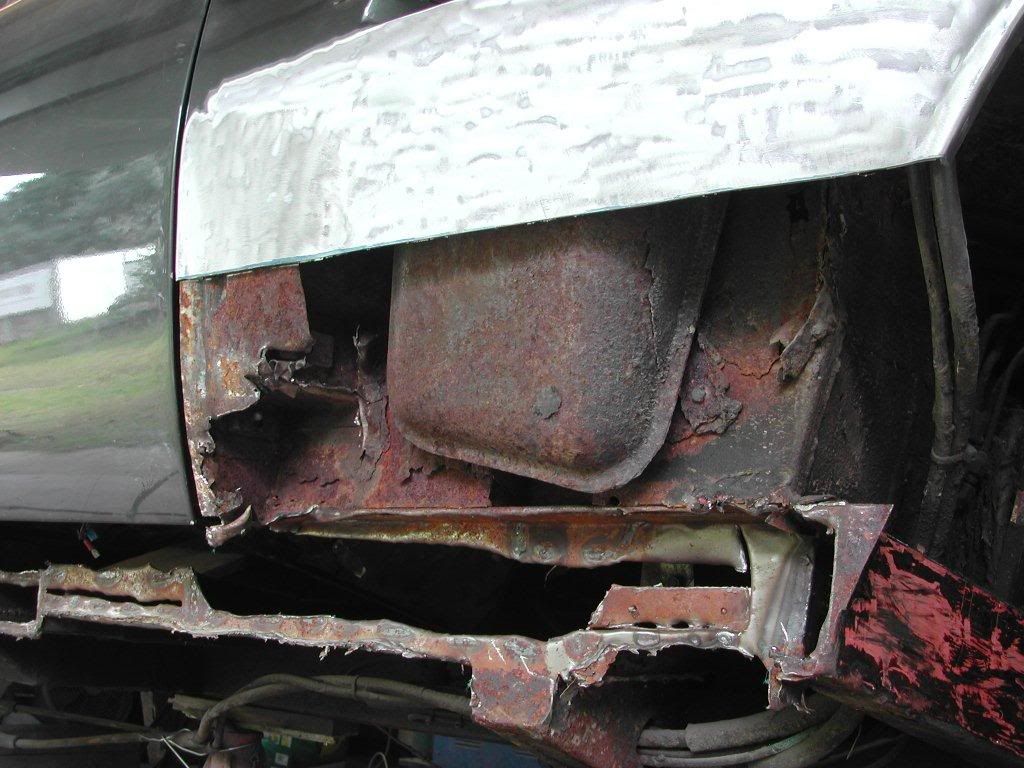


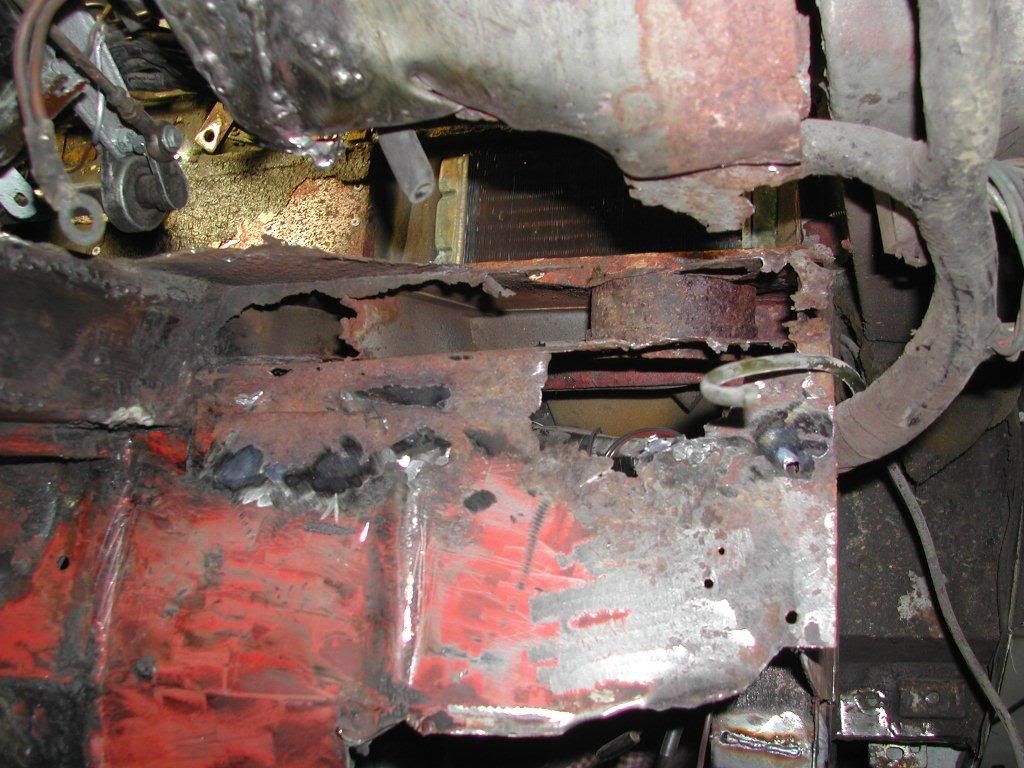
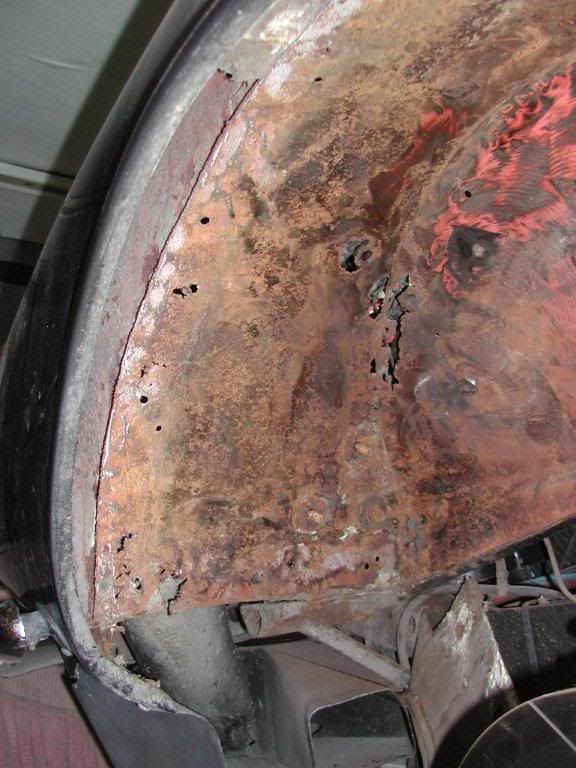
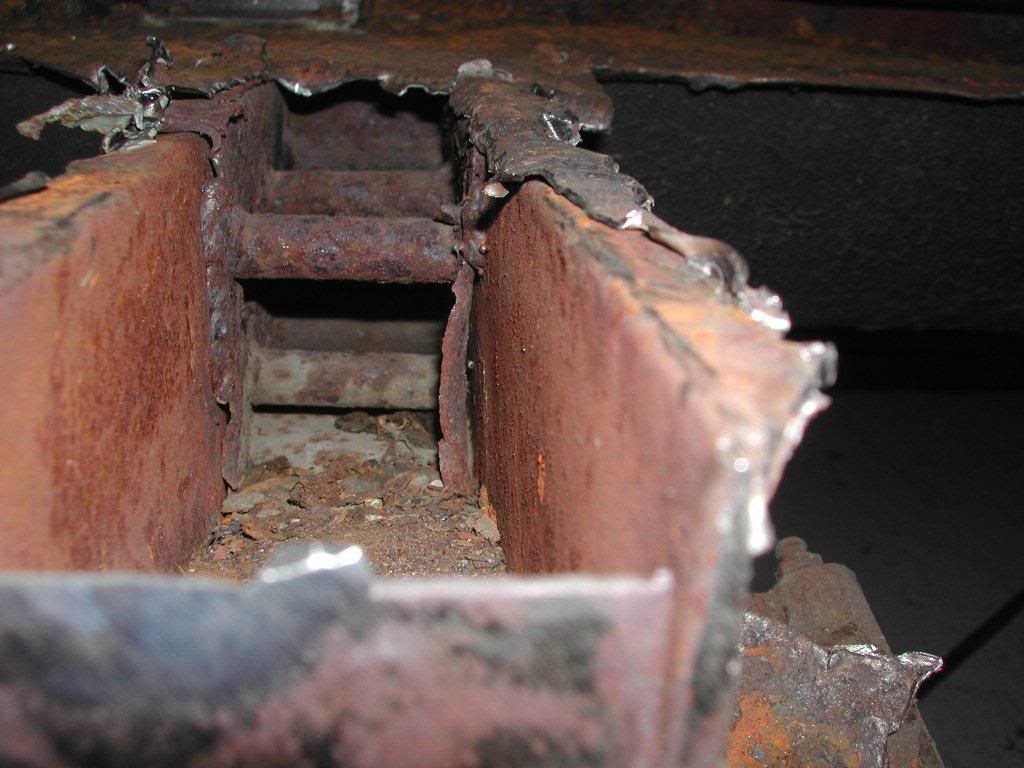
You get the idea.
But he worked through it all one section at a time, until everything was done.



The work took time but this helped me as it allowed payments to be spread over the years making it much less painful.
The shell finally finished and ready to start painting..
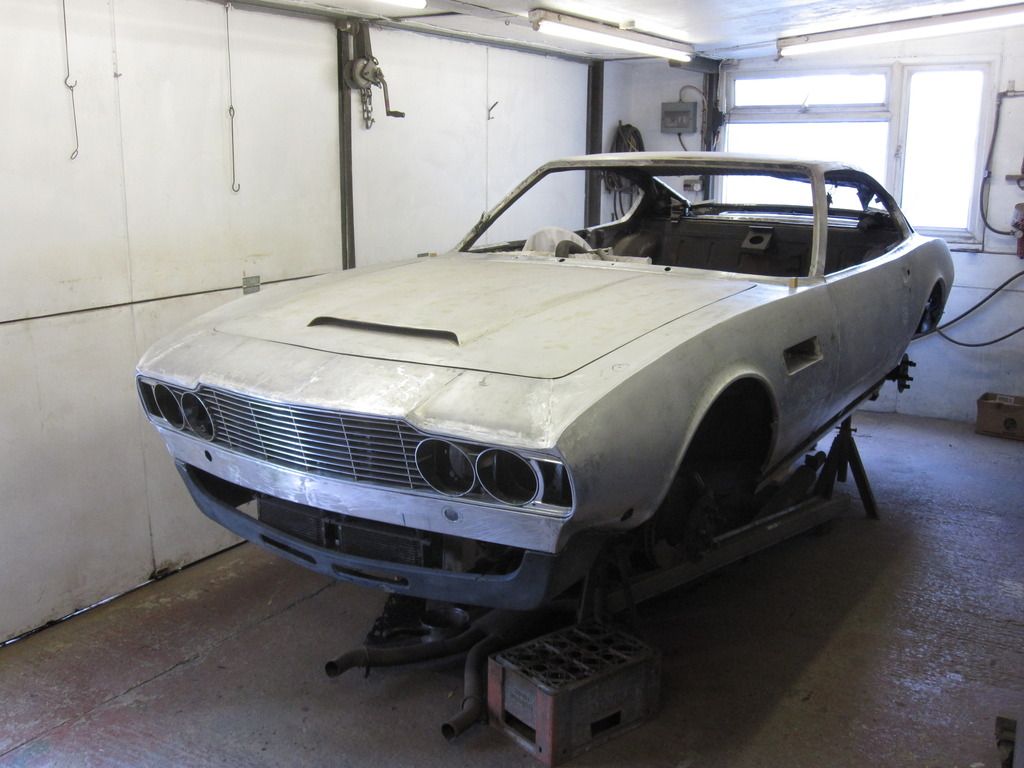
In primer
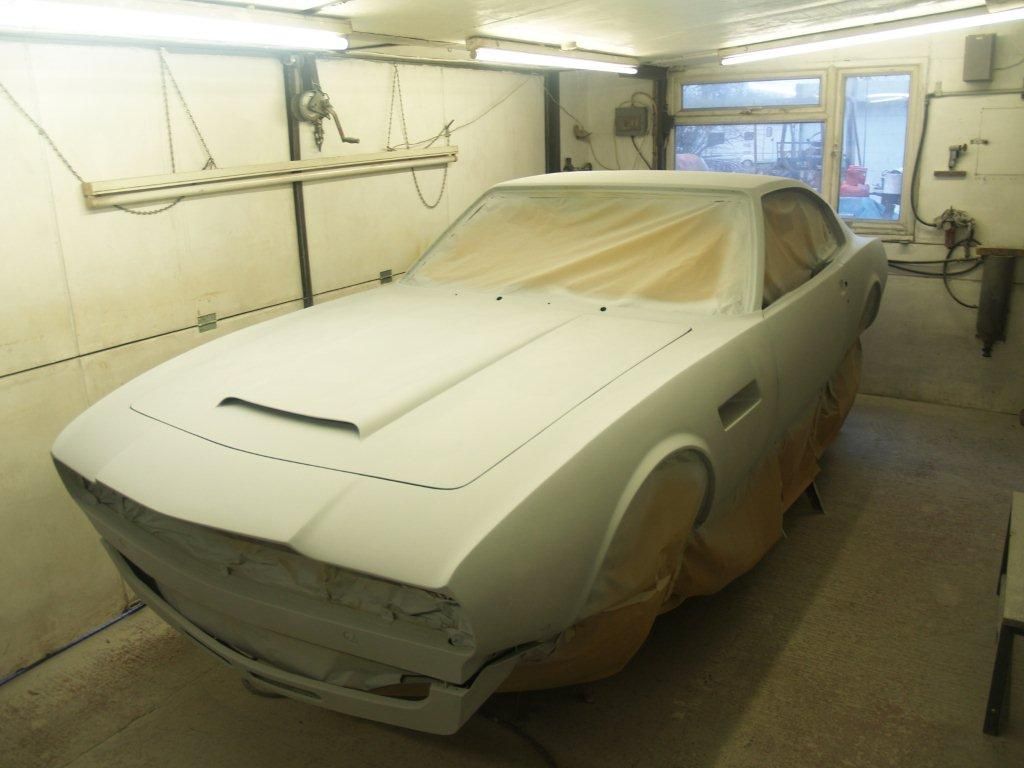
First coat
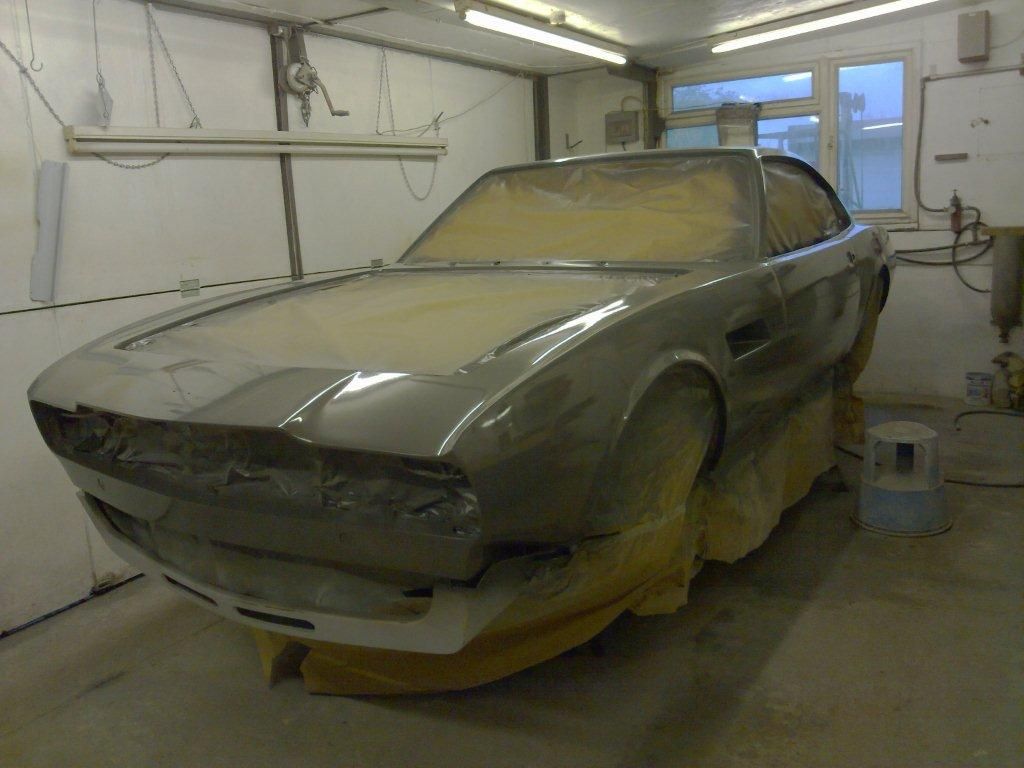
Paint finished
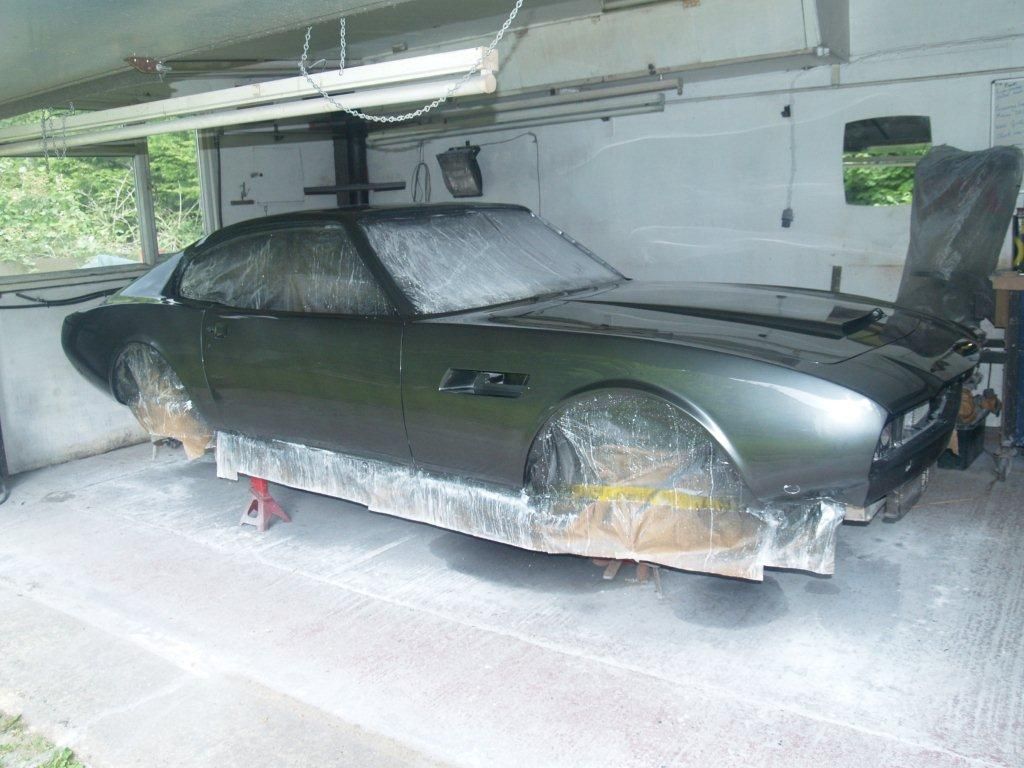
He also fixed all the niggling little bits and pieces that never worked in my ownership, such as the red lights on the doors that come on when they open.
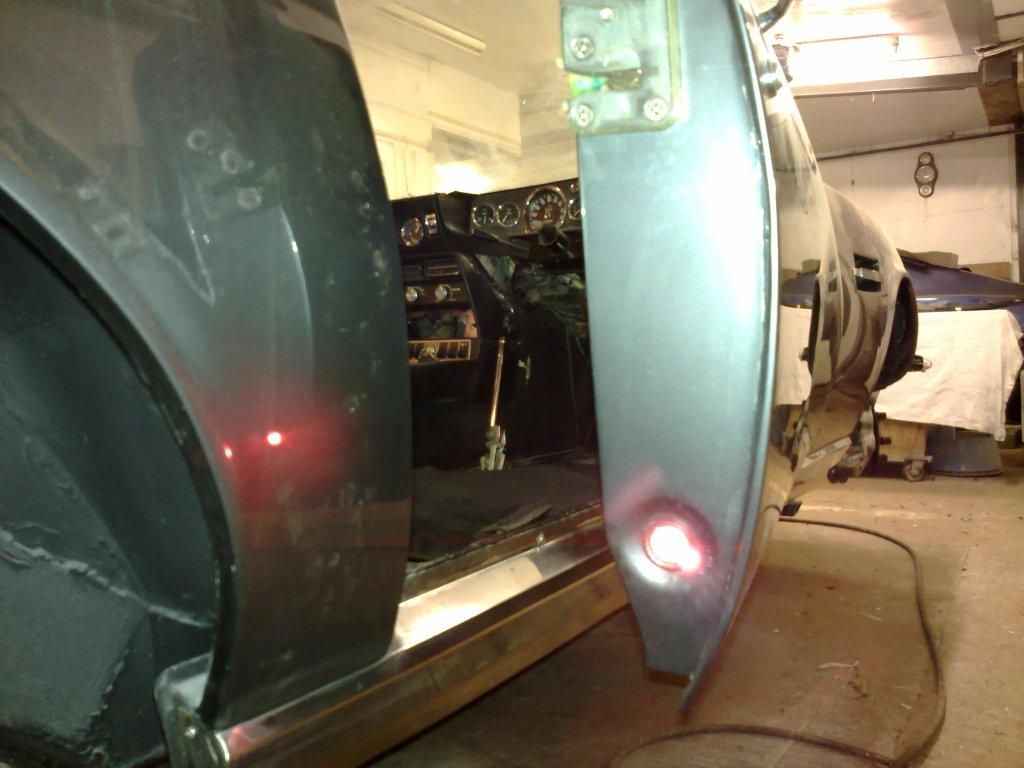
When it was finished, the car had never looked so good.
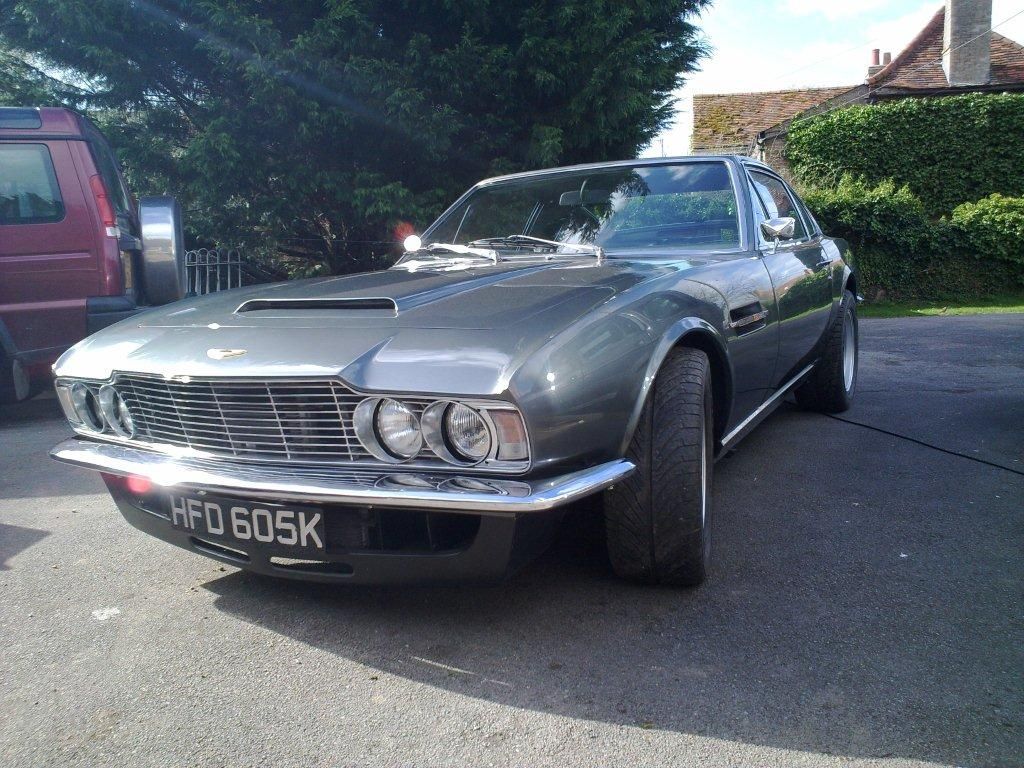
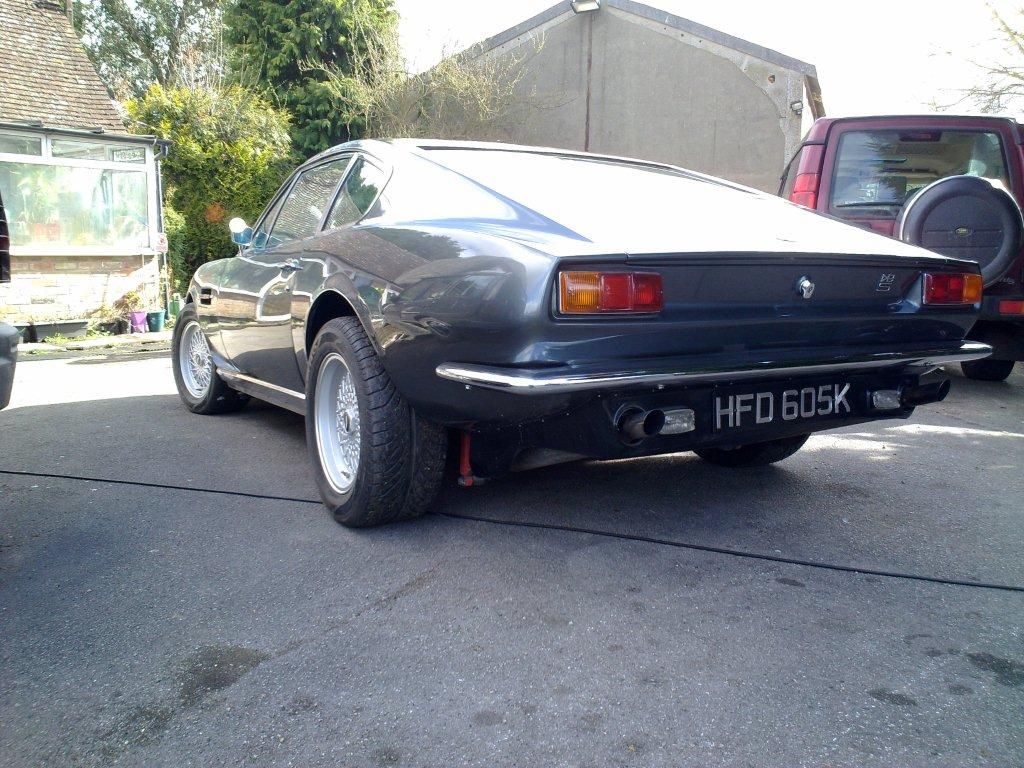
But by now (2013) prices really had started to go up to the point where I thought it was time to sell. We were about to start a building project at home and the money from the car would be a big contributor towards it. If I was going to sell it, then it would never look this good again so now was the time. I booked it in for the Bonhams auction at Newport Pagnell in May 2013 and secretly hoped it wouldn’t sell…
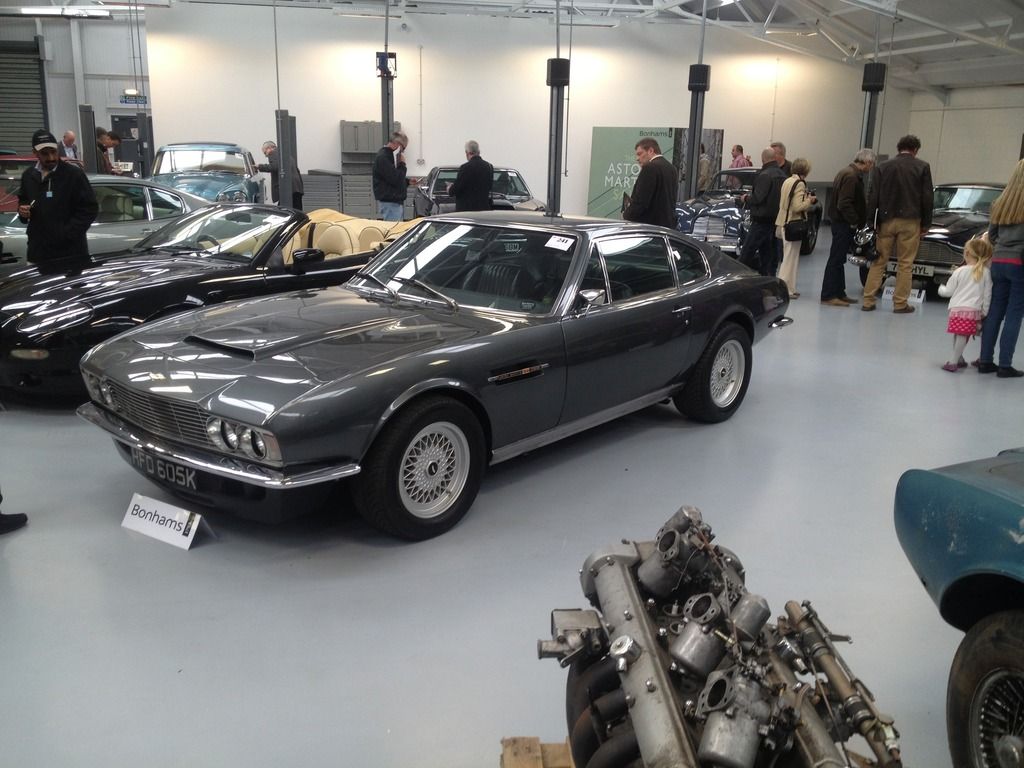

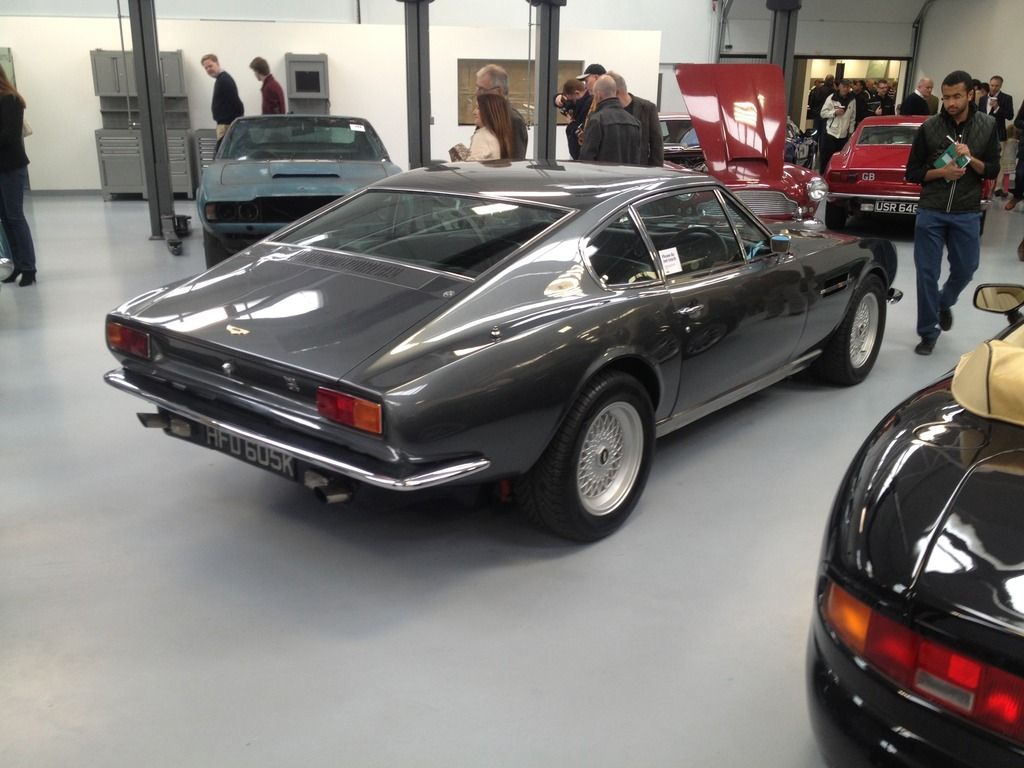
But of course it did, for £60k to a chap in Germany.
I was gutted. The car had gone straight from the restorer to Bonhams and I’d never even had a chance to drive it in its newly restored form. I’ve bought and sold plenty of cars over the years but this one really got to me. I missed not having an Aston terribly, it had been such a part of my life.
I managed to hold out until 2015. In the meantime, a Porsche 996 Turbo came and went, then a Mercedes CL55 Supercharged, followed by a Porsche 997 Turbo. All great cars but none had the sense of occasion that the Aston V8 had. I followed the market closely but it was just going up and up and up. I could not have bought my car back for £60k, good ones were now pushing £100k.
To be continued…
February 2005, that was when I bought my first Aston, a 1971 DBS V8, from a Coys auction at a classic car show in Maastricht. I saw it on their website, booked a ticket on the Eurostar and headed over for the show. I got there an hour or two before the auction started, crawled over and under it enough to form an opinion that it was worth it if the price was right.
The bidding started and the price went up quite quickly to near my limit but then thankfully slowed. I put my bid in but was outbid, so I bid again to what was my max (having carefully calculated buyers premium, VAT etc) and won!
A DBS V8 for £11k, I couldn’t think of a better car for the money. The next day, still somewhat in a state of shock, I drove it back to England.
As I crossed Northern Europe, I soon got used to the people leaning out there cars with phones taking pictures. When I stopped for petrol, the car would be surrounded. It was surreal and something I had never experienced before. The journey home passed without incident, although I was convinced I wasn’t going to make it and that some terminal problem would end the adventure. But nothing happened, the Aston just rolled along the Autoroute without a single issue. At the Eurotunnel, I was waved straight through and soon I was back home in London with my Aston Martin.
The eight years that followed were a rollercoaster! That car sucked up every spare penny I had. But I tried to use it as much as I could.
Here are some photos from an AMOC instruction day at Curborough, which show the car as bought.



It took me and the Mrs on weekends away and trips abroad.

I went through the running gear, upgrading and replacing bits as necessary. I lowered the suspension, fitted some later wheels with better tyres, and continued to drive it as much as possible.



More trips abroad, here in rural France on the way to a friends wedding.

Rolling road day

I even did a RWYB day in it at Santa Pod!



(I smoked the Camaro...)
After a few years, one improvement I did want to make was to convert it from the 3 speed Torqueflite automatic gearbox to a manual. The mechanical fuel injected engines did not have an abundance of torque low down and needed to be revved so a manual suited the engine much better. I test drove two manual cars belonging to other AMOC members which underlined how much better the manual was.
I found the correct dog leg ZF manual box for £5k and was all set to get it installed when it became apparent that the car needed a full engine rebuild. So the gearbox was sold and the engine was rebuilt, which stopped the oil pressure gauge flicking all over the place!



It sounds so simple when you type it like that, but I had never spent such a significant sum on a car before. The rebuild cost of the engine was far in excess of the purchase price..
But even after the newly rebuilt engine was back in the car, I was always chasing problems. I just didn’t have the cash to really sort the car out, all the money I spent was just keeping it on the road rather than improving it. Despite the thousands I spent every year, it was still a condition 2/3 car. Everything went wrong with it: brakes, suspension, steering. I always thought that once something was repaired you could forget about it but not with this car. We replaced a number of components two or three times. The Mechanical Fuel Injection pump kept leaking, despite being rebuilt, so that had to come off and be sent back to the company that reconditioned it the first time. The problems just went on and on...
Then it failed the MOT due to corrosion….
Despite all of the above, I never thought of selling it (okay I did but only briefly!). What else would give me so much pleasure (and pain!) for the same price? This was before prices had got silly. So I found a chap who knew Astons (a fellow DBS V8 owner) but who worked on his own in a single unit to do the work, thus avoiding the eye watering prices some Aston specialists were quoting.
He stripped it all back and uncovered all manner of horrors. Accident damage that had been badly repaired and corrosion everywhere. Boot floor, inner wings, sills, A post, B post, floor plans, door frames etc. The corrosion was the worst he’d ever seen and this was not helped by the fact that my Aston had been very badly restored at some point in the past for a previous owner in Holland with all manner of bodges by someone who clearly knew nothing about Astons. I have hundreds of pictures of the restoration but these should give you an idea of the extent of the rot.






You get the idea.
But he worked through it all one section at a time, until everything was done.



The work took time but this helped me as it allowed payments to be spread over the years making it much less painful.
The shell finally finished and ready to start painting..

In primer

First coat

Paint finished

He also fixed all the niggling little bits and pieces that never worked in my ownership, such as the red lights on the doors that come on when they open.

When it was finished, the car had never looked so good.


But by now (2013) prices really had started to go up to the point where I thought it was time to sell. We were about to start a building project at home and the money from the car would be a big contributor towards it. If I was going to sell it, then it would never look this good again so now was the time. I booked it in for the Bonhams auction at Newport Pagnell in May 2013 and secretly hoped it wouldn’t sell…



But of course it did, for £60k to a chap in Germany.
I was gutted. The car had gone straight from the restorer to Bonhams and I’d never even had a chance to drive it in its newly restored form. I’ve bought and sold plenty of cars over the years but this one really got to me. I missed not having an Aston terribly, it had been such a part of my life.
I managed to hold out until 2015. In the meantime, a Porsche 996 Turbo came and went, then a Mercedes CL55 Supercharged, followed by a Porsche 997 Turbo. All great cars but none had the sense of occasion that the Aston V8 had. I followed the market closely but it was just going up and up and up. I could not have bought my car back for £60k, good ones were now pushing £100k.
To be continued…
Fantastic. Here was mine:

It too was sold to a collector in Germnay and I did well from it (paid just over £16k for it 10 years ago, sold for a decent amount more). Like you I wish I had kept it but over the next 10 years it would have needed serious engine work and chassis work (its periodic with these cars) and I could not afford those.
Still, I owned it and I am glad I did.

It too was sold to a collector in Germnay and I did well from it (paid just over £16k for it 10 years ago, sold for a decent amount more). Like you I wish I had kept it but over the next 10 years it would have needed serious engine work and chassis work (its periodic with these cars) and I could not afford those.
Still, I owned it and I am glad I did.
In April 2015, while browsing all the usual internet sites, I saw a project for sale, a 1972 Aston Martin V8. I would have preferred another DBS V8 but there was nothing in my price range and this looked interesting.
The Series 2 (as they are sometime unofficially referred to) is essentially the same car as the DBS V8, the only external difference being the single headlight front instead of the twin headlight style of the earlier car. The engine is still the mechanically fuel injected V8, whose power wasn’t matched by the Weber Carb’d cars until the Vantage was introduced in 1978.
Internally there were very minor changes, the main one being improved controls for the air-conditioning system that was now standard equipment (it was only an option on the DBS V8).
288 of these cars were built before the Series 3 was introduced in 1973. Series 3 cars have a bigger bonnet bulge to clear the air box for the carbs whereas the DBS V8 and Series 2 feature a lower bonnet bulge.
Here are a couple of pictures showing the car from the ad.
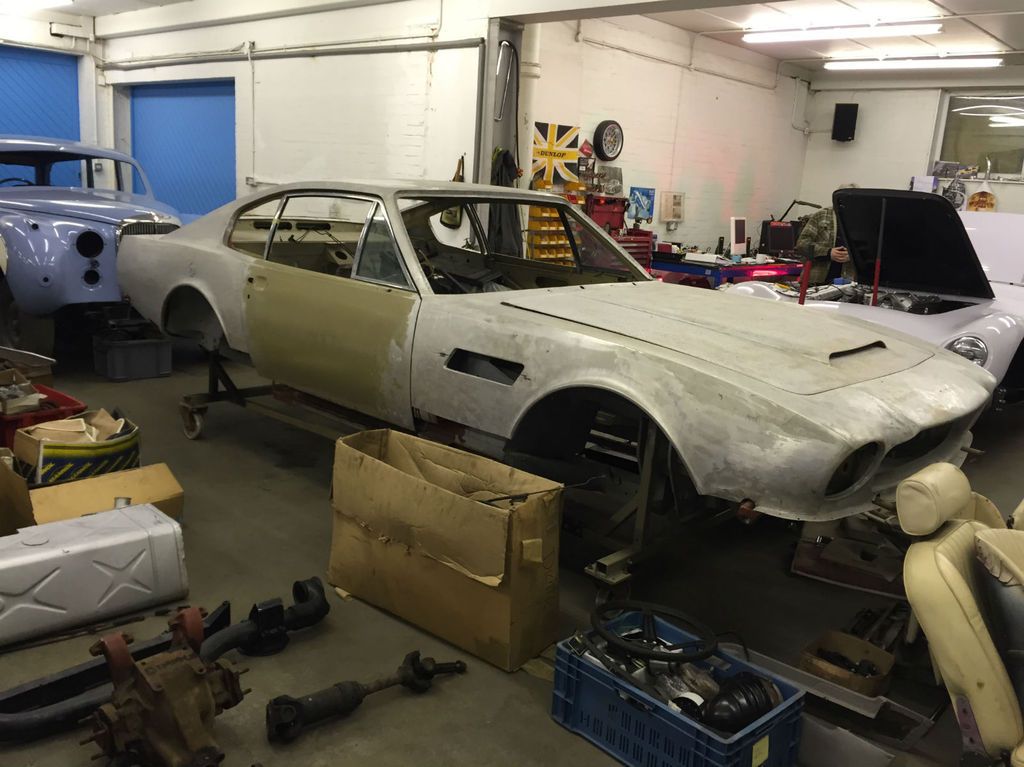

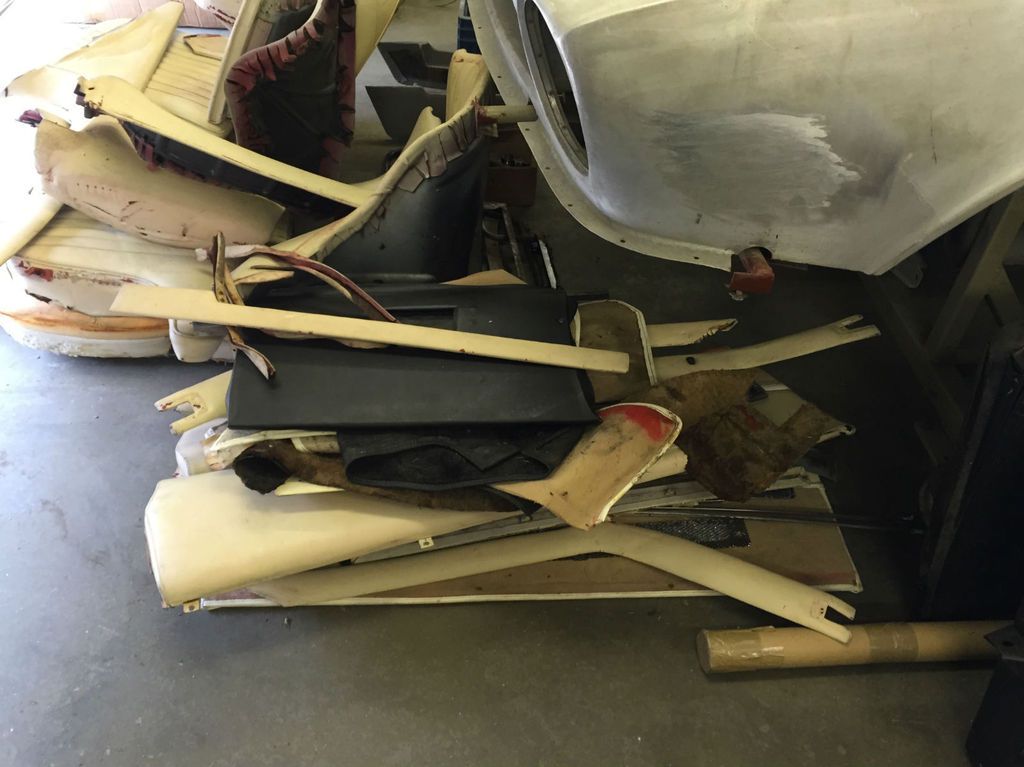
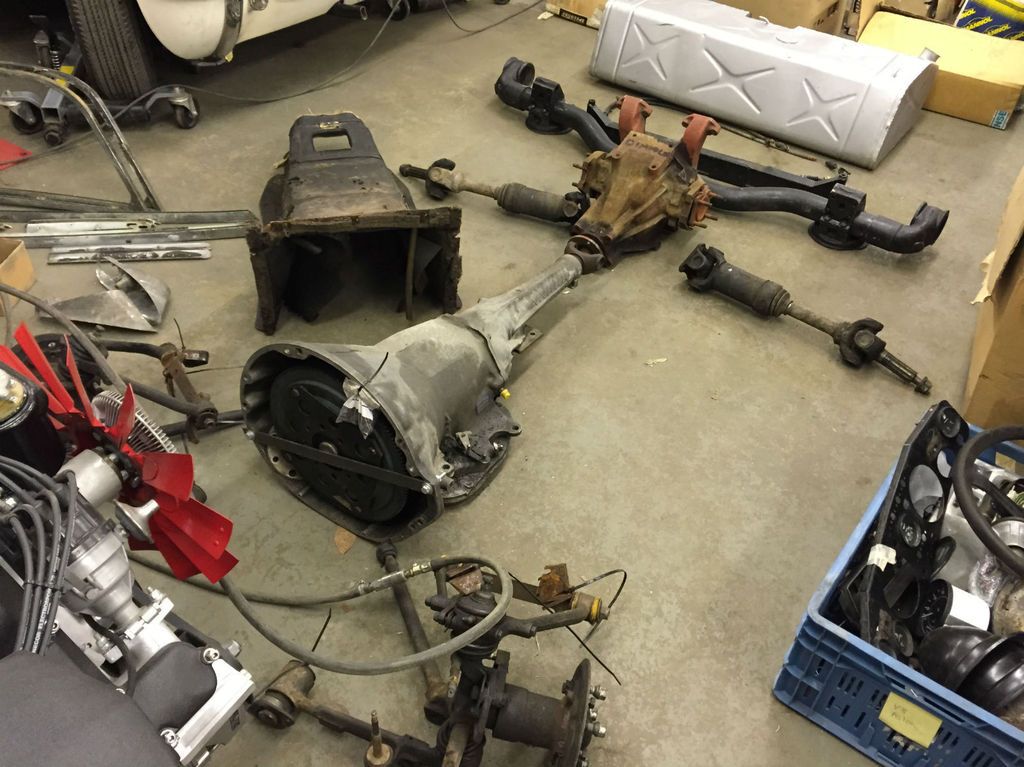
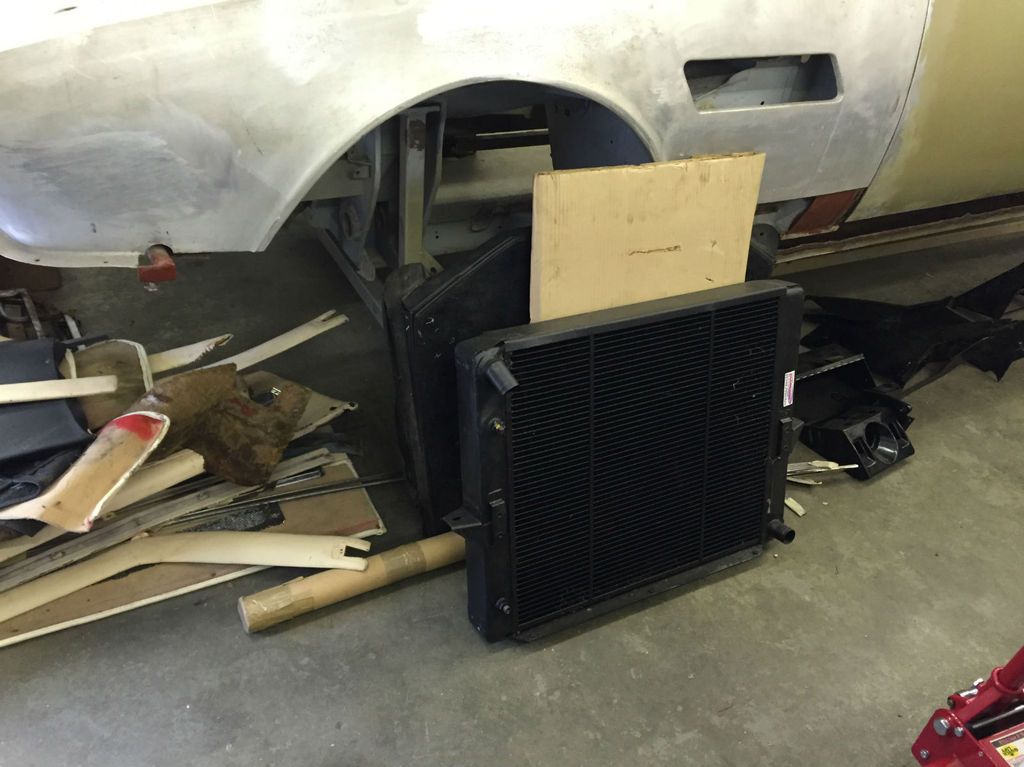
Not the usual rusty barn find project but a stripped down shell (parts in boxes) complete with a fully rebuilt engine. Initially the dealer was listing the engine as one item and separately the body shell (with the parts) as another item.
I went to view the car with the bodyshop man who restored my DBS V8. We checked over the shell, which needed some work, but was a good base to start. Crucially we could see everything so there should be no nasty surprises to uncover.
The car itself was abit of a strange one. I was able to determine with help from Works Service that it was an original UK RHD car but at some point in its past, it had been exported to Europe, converted to LHD and ‘customised’. This boiled down to somebody modifying the rear bodywork to make it look like a later post 1978 Osca India V8 with a flip tail. I guess this is no different to someone forward dating a 911 which was very popular in the 1980’s.
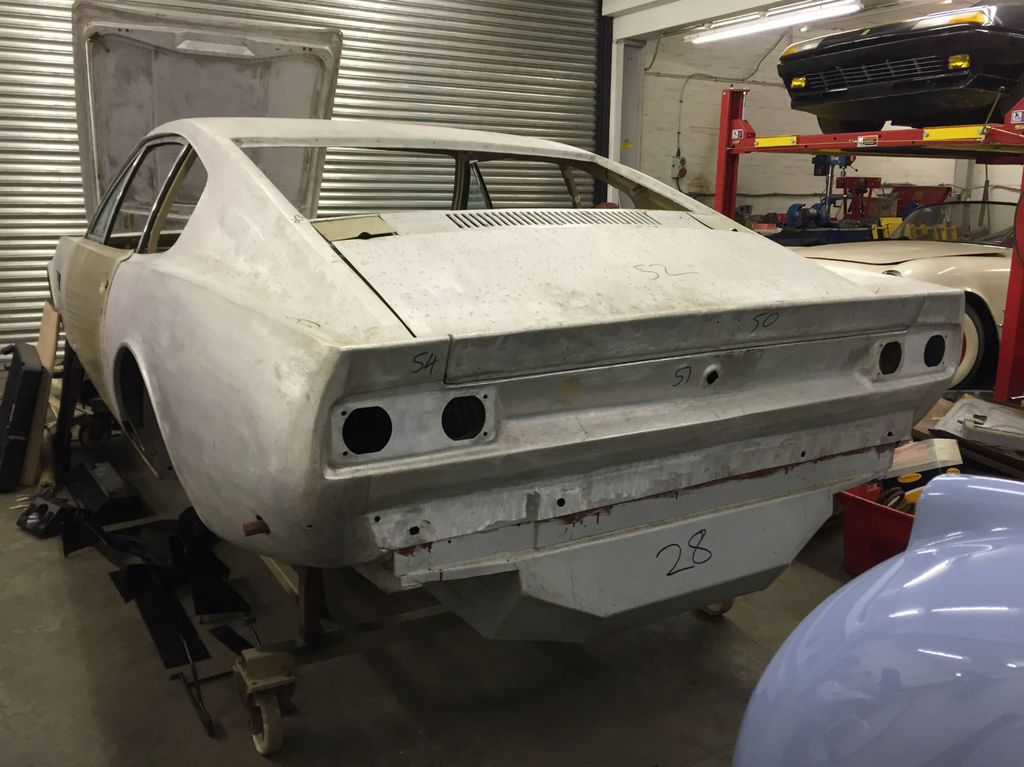

The car had passed through several owners and countries before ending up in Germany where the restoration had started and the strip down had begun. Prior to the strip down, the car had been painted black with a tan interior and had later wheels fitted. Here’s a pic of an old ad (from 2010) for the car before it was stripped down.
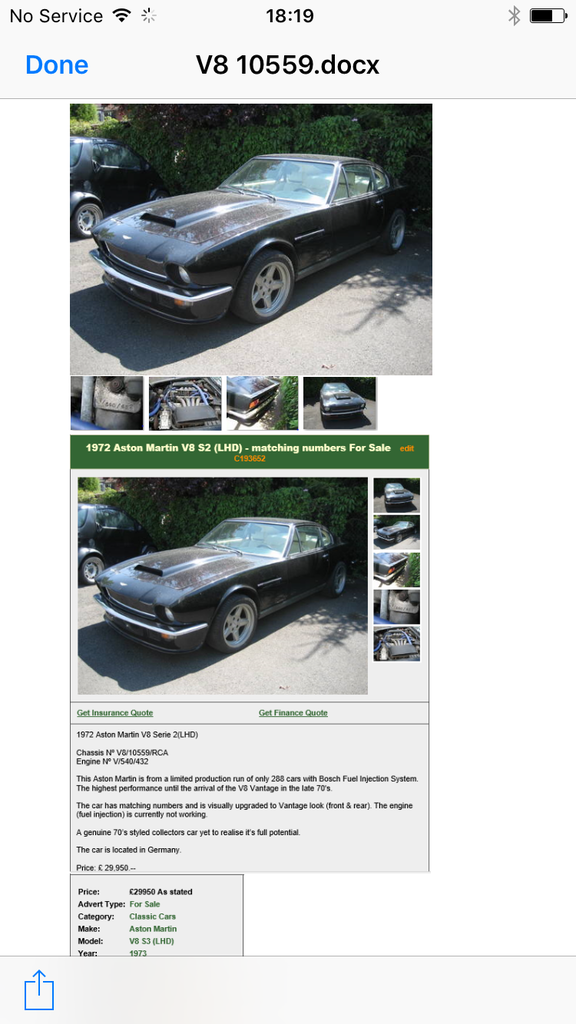
Note it’s wearing a Series 3 bonnet in the photo but now has the correct Series 2 bonnet.
The bodyshop that started work on the car was in Germany but it had no experience of working on Astons. Fortunately they had not got too far before work stopped.
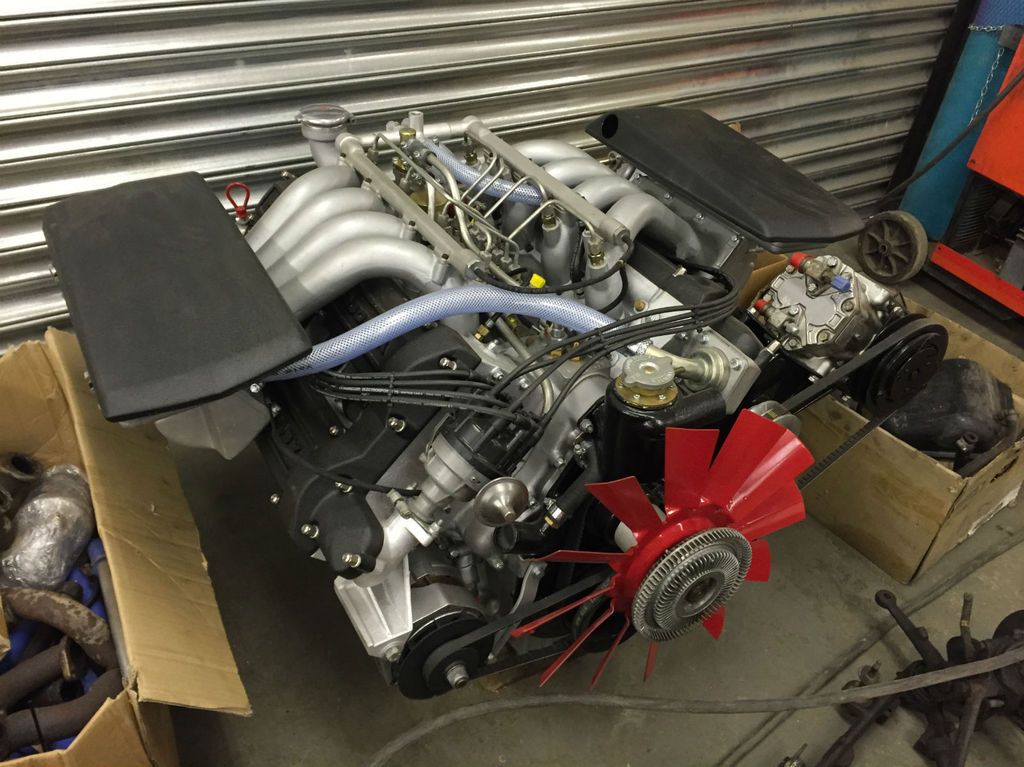
The vendor told me that engine had been sent to Goldsmith & Young in the UK for a rebuild and I was able to speak to John Goldsmith who confirmed that he knew the car and had indeed rebuilt the engine, including sending the Bosch mechanical fuel injection pump to Germany for overhauling.
He also told me that he had been brought in by a previous owner to repatriate the car, along with all the parts and the engine. But other than bring it back and rebuild the engine, he had done nothing further with it. This owner was a German man who, on looking back through some of my old emails, had actually emailed me in the past to see if I wanted to sell my DBS V8. According to John Goldsmith, he is a part time car dealer and when the quotes to rebuild the car came in, it was too much for him and he sold it on.
Works Service were also able to tell me that the car was originally Cornish Gold with a red leather interior and that the engine the dealer was selling was the matching number engine for the chassis, which was important to me. The interior would therefore appear to be the original that has been painted cream. If you look closely in the pictures above you can see the red is still visible in places.
So a deal was agreed and I purchased the engine, the bodyshell and all the parts for £34k. This was the same price that the previous German owner had paid Goldsmith & Young just to rebuild the engine.
Although it’s difficult to describe a project at this price as a good deal, it was the only way I could get back into Aston V8 ownership. From the restoration of my DBS V8, I had a fair idea what the bodywork costs would be so I knew that I would at worst come out at market value for the car which I estimated to be around £70-80k when it was finished. I don’t intend to sell it but it helps the man maths if the numbers add up! Not having to rebuild the engine was a significant factor in the purchase too.
We collected the car in April 2015. The bodyshell and glass went to the bodyshop and I loaded everything else, including the engine, into my van and brought it all home.
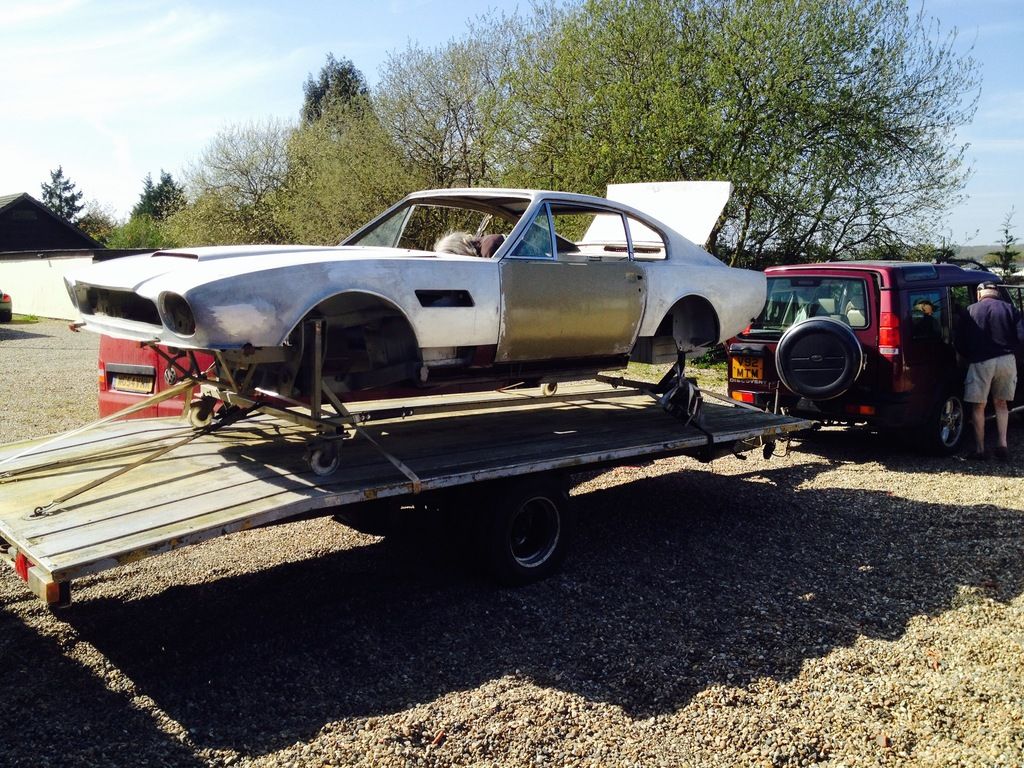
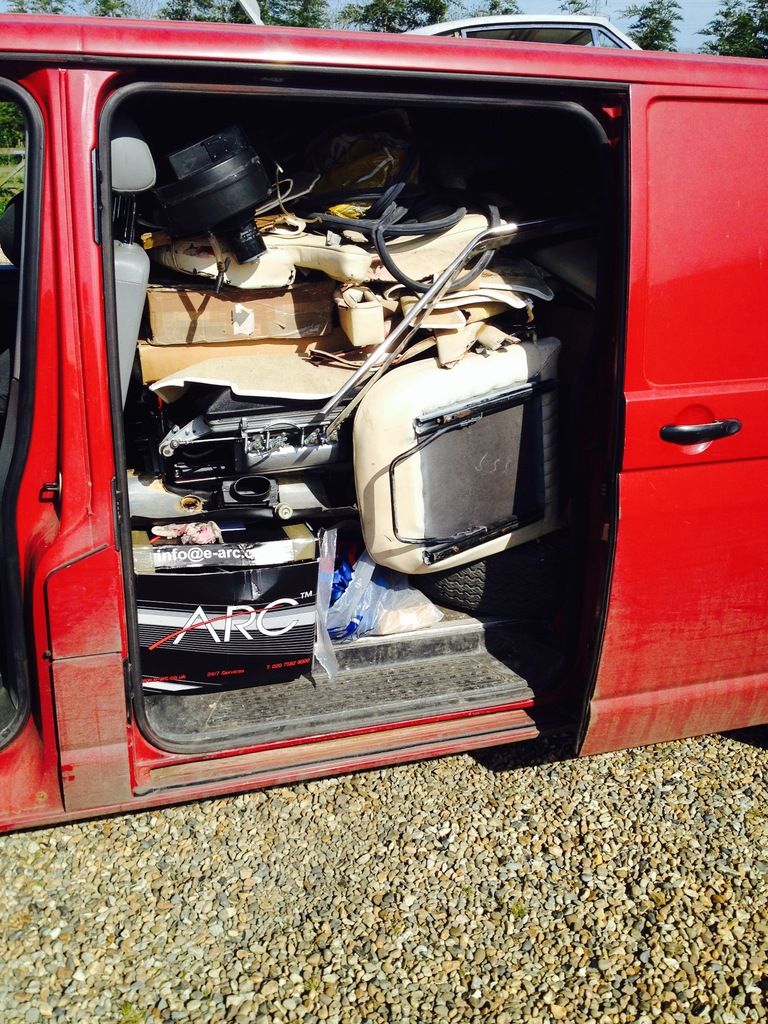

To be continued…
The Series 2 (as they are sometime unofficially referred to) is essentially the same car as the DBS V8, the only external difference being the single headlight front instead of the twin headlight style of the earlier car. The engine is still the mechanically fuel injected V8, whose power wasn’t matched by the Weber Carb’d cars until the Vantage was introduced in 1978.
Internally there were very minor changes, the main one being improved controls for the air-conditioning system that was now standard equipment (it was only an option on the DBS V8).
288 of these cars were built before the Series 3 was introduced in 1973. Series 3 cars have a bigger bonnet bulge to clear the air box for the carbs whereas the DBS V8 and Series 2 feature a lower bonnet bulge.
Here are a couple of pictures showing the car from the ad.





Not the usual rusty barn find project but a stripped down shell (parts in boxes) complete with a fully rebuilt engine. Initially the dealer was listing the engine as one item and separately the body shell (with the parts) as another item.
I went to view the car with the bodyshop man who restored my DBS V8. We checked over the shell, which needed some work, but was a good base to start. Crucially we could see everything so there should be no nasty surprises to uncover.
The car itself was abit of a strange one. I was able to determine with help from Works Service that it was an original UK RHD car but at some point in its past, it had been exported to Europe, converted to LHD and ‘customised’. This boiled down to somebody modifying the rear bodywork to make it look like a later post 1978 Osca India V8 with a flip tail. I guess this is no different to someone forward dating a 911 which was very popular in the 1980’s.


The car had passed through several owners and countries before ending up in Germany where the restoration had started and the strip down had begun. Prior to the strip down, the car had been painted black with a tan interior and had later wheels fitted. Here’s a pic of an old ad (from 2010) for the car before it was stripped down.

Note it’s wearing a Series 3 bonnet in the photo but now has the correct Series 2 bonnet.
The bodyshop that started work on the car was in Germany but it had no experience of working on Astons. Fortunately they had not got too far before work stopped.

The vendor told me that engine had been sent to Goldsmith & Young in the UK for a rebuild and I was able to speak to John Goldsmith who confirmed that he knew the car and had indeed rebuilt the engine, including sending the Bosch mechanical fuel injection pump to Germany for overhauling.
He also told me that he had been brought in by a previous owner to repatriate the car, along with all the parts and the engine. But other than bring it back and rebuild the engine, he had done nothing further with it. This owner was a German man who, on looking back through some of my old emails, had actually emailed me in the past to see if I wanted to sell my DBS V8. According to John Goldsmith, he is a part time car dealer and when the quotes to rebuild the car came in, it was too much for him and he sold it on.
Works Service were also able to tell me that the car was originally Cornish Gold with a red leather interior and that the engine the dealer was selling was the matching number engine for the chassis, which was important to me. The interior would therefore appear to be the original that has been painted cream. If you look closely in the pictures above you can see the red is still visible in places.
So a deal was agreed and I purchased the engine, the bodyshell and all the parts for £34k. This was the same price that the previous German owner had paid Goldsmith & Young just to rebuild the engine.
Although it’s difficult to describe a project at this price as a good deal, it was the only way I could get back into Aston V8 ownership. From the restoration of my DBS V8, I had a fair idea what the bodywork costs would be so I knew that I would at worst come out at market value for the car which I estimated to be around £70-80k when it was finished. I don’t intend to sell it but it helps the man maths if the numbers add up! Not having to rebuild the engine was a significant factor in the purchase too.
We collected the car in April 2015. The bodyshell and glass went to the bodyshop and I loaded everything else, including the engine, into my van and brought it all home.



To be continued…
Gassing Station | Readers' Cars | Top of Page | What's New | My Stuff




 Proper Astons.
Proper Astons.